Standard 6.10: Major Components of Local Government
Explain the major components of local government in Massachusetts. (Massachusetts Curriculum Framework for History and Social Studies) [8.T6.10]
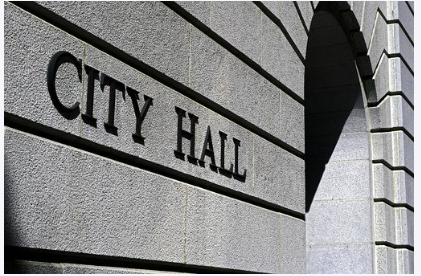
Figure \(\PageIndex{1}\): "City Hall" by Kevin Norris from Pixabay
Look at a map of the United States and you will see towns and cities in every part of every state. The Census Bureau considers towns and cities to be incorporated places that "expand (or contract) over time as population and commercial activity increases (or decreases)" (Understanding Place in Census Bureau Products, slide 3).
There are over 19,000 incorporated towns and cities in the country. Those with a population of 50,000 or more are generally considered to be cities. New York City is the nation's largest with more than 8.6 million people.
Towns and cities have governments that provide services to the people who live there. In Massachusetts, there are 50 cities and 301 towns, each with its own local government (see Forms of Local Government: Commonwealth of Massachusetts).
Local governments have an executive (a Select Board or a Mayor) and legislative branch (a town meeting or town/city council), depending on the size of the community (see the local government organizational chart from Mass Audubon).
You can learn more at Who Runs the Show? Understanding Your Local Government from Cincinnati Public Radio (2019).
6.10.1 INVESTIGATE: Town Meetings, Open Meeting Committees, and Local School Board Elections
Town Meetings
The town meeting is one of our most enduring political legacies from colonial America. A town meeting happens when members of a community gather to discuss issues and make decisions about them.\(^*\)
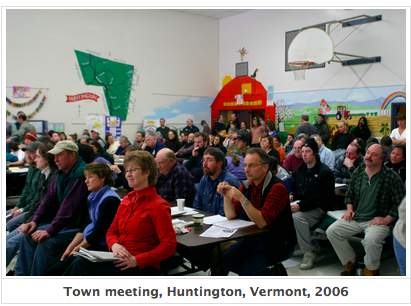
Figure \(\PageIndex{2}\): A Town Meeting in Huntington, Vermont by Redjar
A town meeting is a form of direct democracy in which people from the town, rather than elected representatives, make decisions about government policies and practices. Read the Rules of a Town Meeting.
The earliest recorded town meeting was in Dorchester, Massachusetts, October 8, 1633. In colonial America, only White males participated in town meetings.
Today, communities in Maine, New Hampshire, Vermont, Massachusetts and Connecticut, and in the western part of the United States hold town meetings where everyone can attend and speak, although only registered voters can vote. In Vermont, Town Meeting Day is a designated once-a-year public holiday.
Switzerland is the only other country in the world with town meetings. Every Swiss community, from alpine villages to the city of Zurich, has town meeting governance. In Swiss communities with large populations, a local parliament replaces the all-community member meeting (Clark & Teachout, 2012).
There are two types of town meetings in the United States: Open and Representative.
- Open town meetings are held in towns with less than 6,000 people.
- A board of selectmen reads a list of issues to be voted on.
- A moderator runs the meeting, explains each issue, and holds the vote for each issue.
- The meetings are run on Parliamentary Procedure.
- Votes are taken on a voice basis, not a written ballot.
- Representative town meetings are held in towns with more than 6,000 people.
- Townspeople elect representatives to vote for them, acting similarly to a town council.
- The number of town meeting members depends on town population.
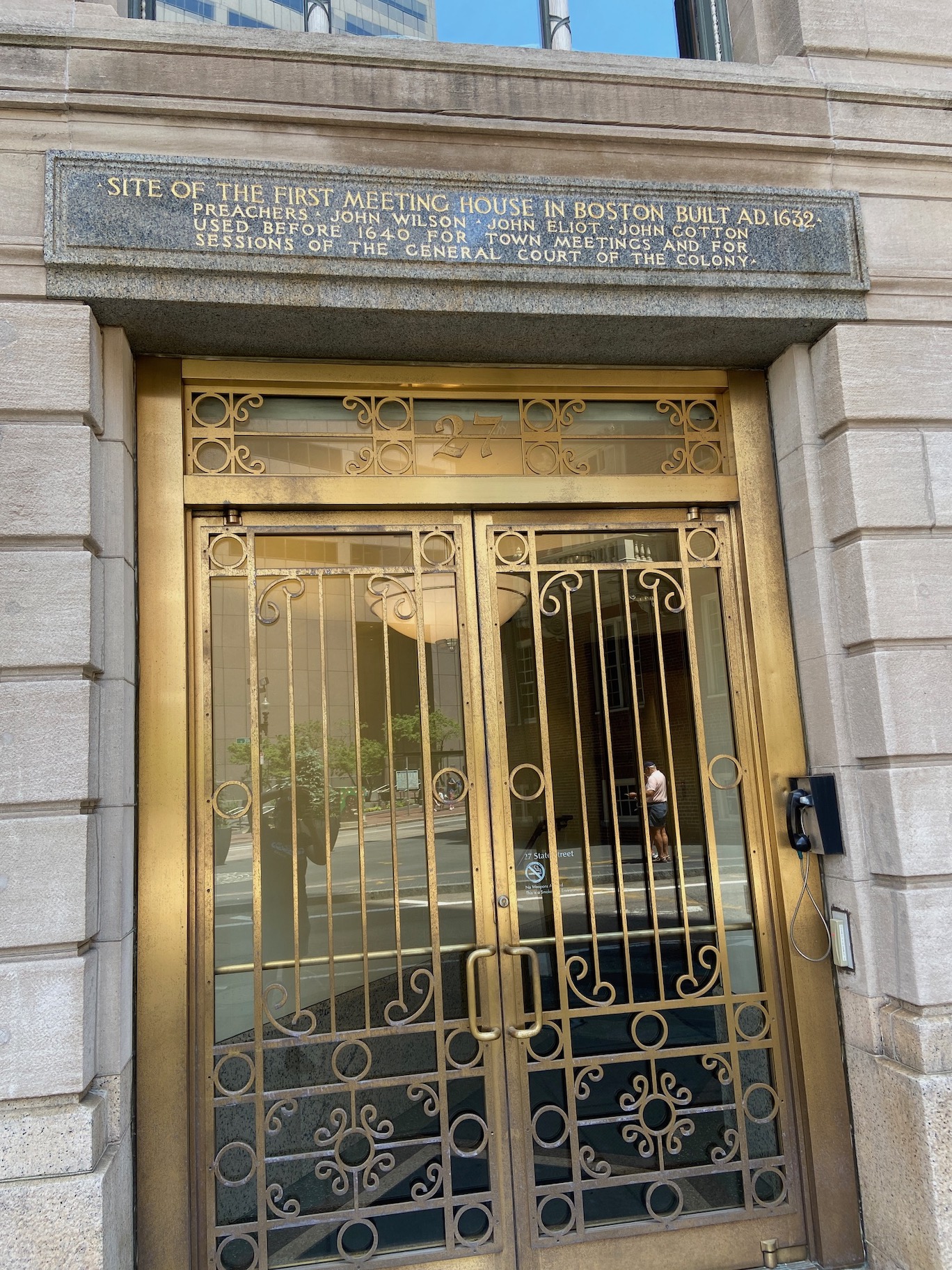
Figure \(\PageIndex{3}\): Site of the first meeting house in Boston, built in 1632 and used before 1640 for town meetings | Photograph by Torrey Trust
The time-honored traditions of New England-style town meetings were upended by the COVID-19 pandemic. Throughout the spring of 2020, communities struggled to hold town meetings while upholding state and local policies and Centers for Disease Control (CDC) guidelines that recommended limiting large gatherings of people while maintaining social distancing protocols. Some towns chose to meet virtually on Zoom. Others opted for outdoor meetings on high school football fields; others chose large indoor facilities where social distancing could be maintained. Not everyone found the process either productive or fair. One parent in a western Massachusetts community called it "democracy only for those with access to transportation; child care; time; agency to speak long after your stated limit is up" (Goodman, 2020, para. 4).
In fact, the pandemic only heightened the already-present complexities of town meetings in today's society where not every community member has the time or resources to participate in making decisions in face-to-face meetings held in the evening or on a weekend. The future of town meeting-style direct democracy is still to be decided, but new formats that offer more ways for more people to participate may be needed.
\(^*\)Note: The term "town meeting" is also used in modern political campaigns where candidates meet face-to-face with voters to present ideas and answer questions from the audience. Television networks often televise these as "town meetings" when they are held by presidential candidates.
Open Meeting Laws and People's Remote Participation
Many of the most important activities of local government happen in public meetings, such as those held by town and city councils, school committees, planning boards, and recreation commissions. People's access to these governmental activities are based on Open Meeting Laws (also known as Sunshine Laws) that require public meetings as well as records and decisions from those meetings be open to the public. The intent is to ensure that government officials are not allowed to make policies behind closed doors out of the view of community members.
Open meeting laws have not always been the case in the United States. It was not until 1976 that all states and the District of Columbia passed laws giving the public access (in many cases limited) to meetings. Under these laws, people have a right to attend, but are not guaranteed a right to speak (Open Meeting Laws and Freedom of Speech, First Amendment Encyclopedia). Learn more about Open Meeting Law in Massachusetts.
In many communities, individuals with disabilities, older citizens, parents with young children, and people working long hours or more than one job have been underrepresented or absent entirely from public meetings.
While the COVID-19 virus has made it more difficult for people to participate in the in-person activities of local government, the COVID-19 pandemic has also forced many communities to create online formats where community members can attend public meetings remotely. As the pandemic recedes, cities and towns have the option of allowing for both in-person and remote attendance to public meetings, a move many commentators believe will enhance public participation and confidence in government. What are the policies for public meetings in your community? Would you be more likely to attend a meeting if you could participate virtually?
Local School Board Elections
Local school boards are one of the most important components of local government and a tremendously influential part of the American educational system. A school board is a legal agency "created for the purpose of implementing state legislative policy concerning public schools and locally administering the state's system of public education" (School Boards, para 6). School boards control the day-to-day operation of schools in their districts, setting policies on everything from staffing, equipment purchases, school start and end times, finance and expenditures, and extracurricular activities. During the COVID-19 pandemic, school boards around the nation have been involved in debates and disputes about masks and vaccinations as well as threats to teacher safety and issues around what should and should not be taught in schools.
Across the country, most school board members (about 90%) are democratically elected; some members are appointed. The Los Angeles Unified School District, with more than 600,000 students, has an elected 7-member school board. In some places, notably big city school systems, mayors have great control of school boards and how educational decisions are made. Despite their power to impact educational policy and practice, school board elections generally attract little public attention with as few as 10% of eligible voters actually voting.
Given the importance of school boards, who runs for these positions? Basically, candidates must be 18 years old, allowed to vote, and living in the school district. No degree or experience is required. Most school board positions are part-time and unpaid. The site Ballotpedia has data on 2,803 elections for school board seats from 2018 to 2020 in the 200 largest school districts and the districts that overlap the nation’s 100 largest cities. Between 57% and 61% of incumbents won; 35% to 40% of the elections were unopposed.
At this time, more and more people as well as politically motivated special interest groups are paying attention to local school board elections. The organization Right Wing Watch has reported that well-funded Republican groups are encouraging conservative-minded individuals to run for local school boards to then implement anti-critical race theory curriculum and other reforms (Flux, August 14, 2021). At the same time, progressive groups are promoting their own candidates, particularly young people recently out of high school to bring youth- and student-centered viewpoints to the decision-making table (Urgent Call: Get Out the Vote for School Board Elections).
Questions to consider:
- Who serves on school boards in your community?
- When is the next election and who is running for a seat on the board?
- What would be your campaign message and issues if you were to run for school board in your community?
Media Literacy Connections: Local Governments, Social Media and Digital Democracy
Social media has been hailed as a way to promote what has been called digital democracy (or e-democracy or e-government). In theory, online access will give everyone in a community opportunities to express their views and influence public policy. The record to date has been far less than that, as one researcher noted, "democratic institutions have witnessed no digital revolution through the Internet" (Bastick, 2017, p. 3).
Still, can technology revolutionize democracy? One starting point for considering this question is analyzing how your local government uses social media and how might it use it more effectively and democratically.
Suggested Learning Activity
Online Resources for Town Meetings
6.10.2 UNCOVER: Democratic Decision-Making in Cooperative Organizations and Worker/Employee-Owned Companies
October is Co-op Month, celebrated nationally since 1964. Co-op is short for cooperatives - "democratic businesses and organizations, equally owned and controlled by a group of people. There are worker co-ops, consumer co-ops, producer co-ops, financial co-ops, housing co-ops, and more. In a cooperative, one member has one vote" (Thoen, 2014, para. 3).
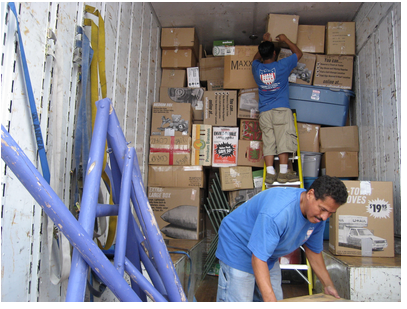
Figure \(\PageIndex{4}\): Moving Company Employees Load a Moving Van by Rharel1 | Public domain
Cooperatives are everywhere. In the region near the University of Massachusetts Amherst campus there are food co-ops, agricultural co-ops, arts co-ops, compost and recycling co-ops, food sharing co-ops, credit unions, and worker-owned businesses installing solar panels, brewing beer, and designing and building sustainable structures.
The number of worker-owned companies and community co-ops is growing throughout the country. About 17 million people, or 12% of the U.S. workforce, are employed in worker-owned enterprises (Case, 2010). There are two main types of worker-owned organizations:
- Employee Stock Ownership Plans (ESOP) - approximately 6,600 in the U.S (ESOPs by the Numbers, March 2018)
- Worker Cooperatives (300 in the U.S.)
Some worker-owned companies consist of small groups of artisans or craft workers; for example, Rock City Coffee in Rockland, Maine or PV Squared Solar and Real Pickles in Greenfield, Massachusetts. Large agricultural cooperatives like Land O'Lakes and Ocean Spray have also become major players in dairy production and fruit farming, earning hundreds of millions in annual revenue as member-owned firms.
The democratic decision-making that happens in co-ops and worker-owned organizations provides models for how many businesses, government agencies and school classrooms are or could be run. Using different procedures and formats, members run these organizations democratically. Participating in democratic workplaces offer workers powerful reasons to invest time and energy in making decisions through their voices and votes.
How Platform Co-Ops Democratize Work is a TED talk from August 2021 that explores how democratically organized companies are a fairer alternative to the gig economy.
In the TED talk The Case for Co-Ops, the Invisible Giant of the Economy, researcher Anu Puusa describes the cooperative movement in Finland (5.5 million people have 7 million memberships in cooperative organizations) and its implications for the United States.
Suggested Learning Activities
- Create a podcast or video
- Interview employees that work at a local co-op or worker-owned enterprise to learn what it is like to work in an employee-owned organization.
- What are the advantages and drawbacks of working in this type of organization?
- State your view
- What skills, knowledge, and competencies do you think worker-owners need to successfully support their organizations?
- At PV Squared Solar, a prospective worker-owner must work at the company for a year and then complete an additional one year worker-owner training program dealing with all aspects of cooperative organizations including socially responsible business practices (Solar Design and Installation Company Empowers Employees to be Owners).
- Propose an educational change
Online Resources for Cooperatives and Employee-Owned Businesses
6.10.3 ENGAGE: Should Communities Declare Themselves Safe and Sanctuary Cities?
A safe or sanctuary community is "a city or county in which undocumented immigrants are protected from deportation or prosecution for violations of U.S. federal immigration laws" (Longely, 2019, para. 1).
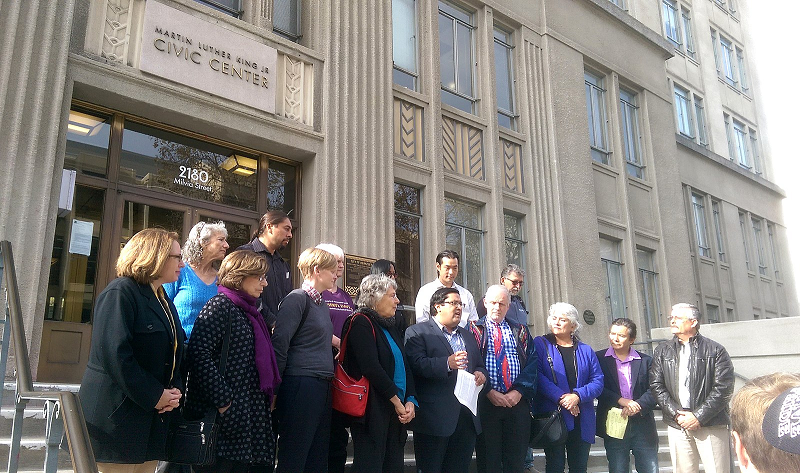
Figure \(\PageIndex{5}\): Jesse Arguin reaffirming Berkley as a sanctuary city, by Alfred Twu | Public domain
In opposition to the federal immigration policies of President Donald Trump’s administration, communities all across the United States have declared themselves to be safe or sanctuary cities.
In safe cities, local officials, including police officers, are prevented from taking actions based on a person’s actual or perceived immigration status (see Northampton council will vote on 'safe city' ordinance; Greenfield's safe community resolution passed by the Greenfield Human Rights Commission in 2017).
In Massachusetts, Amherst, Boston, Cambridge, Concord, Lawrence, Newton, Northampton, and Somerville have passed safe or sanctuary city resolutions by mid-2019.
Suggested Learning Activity
- Argue for and against
- Are Sanctuary Jurisdictions a Good Policy? (resources from the debate website ProCon.org)
- Is a safe city designation needed if a community's police department has a policy of not asking for an individual's immigrant status?
- What should a community do if the federal government threatens or decides to withhold funding from communities that limit cooperation with federal immigration enforcement by declaring themselves to be safe cities?
- Is a safe city designation needed as a symbolic way to oppose federal immigration policies that community considers unfairly target people of color?
Online Resources for Safe and Sanctuary Cities
Standard 6.10 Conclusion
To explore different dimensions of local government, INVESTIGATE examined town meetings as a form of direct democracy used in some communities in Massachusetts and across the nation. To provide a contrast to how local governments function, UNCOVER looked at the practices of democratic decision making in cooperative organizations and worker/employee-owned companies. ENGAGE asked whether communities should declare themselves safe or sanctuary cities.






